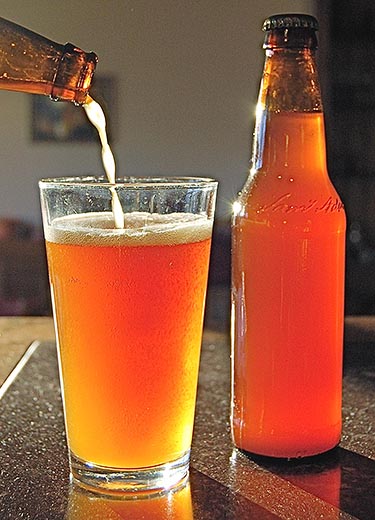
When putting your figures into beersmith you need to put in the total amount of water. Hi mat, I'm not quite sure I understand what you are asking, but I'll have a go any how. I will also be no chilling so will drop 15mins off each addition and dry hop.Īny comments or advise would be much appreciated. Single Infusion, Medium Body, No Mash Out Step Time Name Description Step TempĦ0 min Mash In Add 29.55 L of water at 70.4 C 67.8 CĪs you can see I have added the sparge volume so it is now 0L. Sparge Temperature: 75.6 C TunTemperature: 22.2 CĪdjust Temp for Equipment: FALSE Mash PH: 5.4 PH Sparge Water: 0.00 L Grain Temperature: 22.2 C Mash Name: Single Infusion, Medium Body, No Mash Out Total Grain Weight: 4.45 kg Taste Rating(out of 50): 35.0 Brewhouse Efficiency: 75.00Ĥ.00 kg Pale Malt (2 Row) US (3.9 EBC) Grain 89.89 %Ġ.25 kg Caramel/Crystal Malt - 30L (59.1 EBC) Grain 5.62 %Ġ.20 kg Cara-Pils/Dextrine (3.9 EBC) Grain 4.49 %ġ5.00 gm Cascade (Dry Hop 14 days) Hops -ġ5.00 gm Bravo (60 min) Hops 26.0 IBUĢ0.00 gm Cascade (20 min) Hops 11.0 IBUġ Pkgs Sierra Ale Yeast (Proculture #Pro-10) Yeast-Ale I won't be sparging just draining.Īnyway here is the recipe - A basic APA (I've done heaps of all extract APAs so will be a good comparison). What I need to know is when setting the mash volume do I add the boil volume and sparge volume to get my total volume? It's just that the info in Beersmith says set at boil volume but one would assume you also need to add the sparge volume to account for loss to grain. If you have a question for the experts or want to share your expertise, email us at or visit our website at guys, I'm getting closer to my first BIAB so I thought I'd construct my first BIAB recipe in Beersmith. However, I personally would not do a triple-decoction but would instead do a single-decoction if you want the authentic decocted-beer character. Some brewers have tried adding small amounts of melanoidin malt, which will partially replicate the flavor, but to capture all of the character, you do need to do a decoction. However, a unique German malty flavor and character that comes from decocting and boiling the mash can be difficult to completely replicate using an infusion mash.
MASH AND BOIL BEERSMITH FULL
In addition, the full triple-decoction adds several hours to your brew day. It requires a separate vessel and heat source and can be somewhat messy to perform. One reason brewers rarely practice decoction mashing these days is the added complexity and time. It is rare that brewers perform three- or even two-step mashes anymore. Modern malts are all highly modified, so only a single conversion step is needed to convert the sugars in the malt. Drawing the correct percentage of the mash and bringing it to a boil at each step produced a consistent temperature for each step.Ī triple-decoction mash has, as the name implies, three steps, and the extra steps were used in part to aid in the conversion of under-modified malts before malting science had developed to the level we see today. Decoction mashing was developed in the period before thermometers were in wide use. By “decocting” a portion of the mash and heating it to a boil, you can raise the temperature of the mash for each step, much as you would when adding water for a traditional infusion mash.Īs with other mash techniques, the mash may be completed in one or more stages or steps where the grain is rested at different temperatures. A decoction mash includes at least one step where a portion of the mash, including the grains, is removed and heated in a separate vessel to boiling temperature and then mixed back in with the main mash to raise the temperature of the mash. Triple-decoction mashing is a traditional brewing technique used extensively in Europe for brewing beer.

A Craft Beer & Brewing Magazine reader recently asked us the following question: What is a triple-decoction mash, and why would I need to do one?


 0 kommentar(er)
0 kommentar(er)
